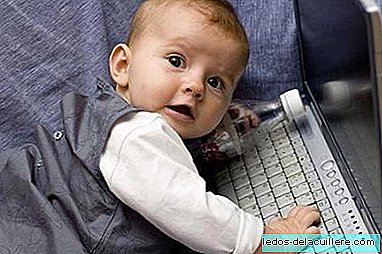
Most viruses are spread through small particles that the patient expels when coughing, talking or sneezing or through objects that have been contaminated with the virus such as towels or toys if we talk about children who share the same space.
But for us to get an idea and be more aware when it comes to prevention, How long do viruses survive in toys?. Researchers at Georgia State University (United States) have discovered that some viruses such as influenza could survive in children's toys long enough to cause new infections.
Up to 24 hours of possible infection
The results of the study published in the scientific journal 'The Pediatric Infectious Disease Journal' revealed that some viruses can remain up to 24 hours with 60 percent relative humidity and up to 10 hours with 40 percent relative humidity.
Children are especially vulnerable to virus infection, because their immune system is not fully developed. If we add to that the coexistence of several children in the same environment for many hours, the result is a sure increase in contagion.
When a toy comes into contact with the saliva of an infected child, the virus can remain on its surface for hours, increasing the possibility of contagion to other children.
The researchers analyzed the lifetime of enveloped viruses (which includes influenza viruses or some coronaviruses as the cause of severe acute respiratory syndrome (SARS) or the Middle East respiratory syndrome) when they were on the surface of an object at different degrees of temperature and humidity.
The importance of cleaning toys

For the study, the researchers used a bacteriophage with wrap, a type of virus that attacks bacteria exclusively, and placed it in different toys with humidity controlled environments at 22 degrees, with 40 or 60 percent relative humidity.
Twenty four hours later, only one percent of the viruses remained infectious in the toy with 60 percent relative humidity, which entails a 99 percent lower risk of causing new infections.
But we must bear in mind that during the course of the 24 hours the risk is greater and decreases as the hours go by.
At a stable humidity of 40 percent, which is more common in indoor environments, in the first two hours, only 0.01 percent of the virus remained, showing a 99.9 percent reduction in the risk of infection, while at 10 hours only 0.0001 percent of the viruses remained alive.
The risk is low, but however small it may always be contagious, it is therefore important that at home, as well as in centers where children share games, wash their hands frequently and toys are disinfected to prevent them from becoming a reservoir of diseases.












